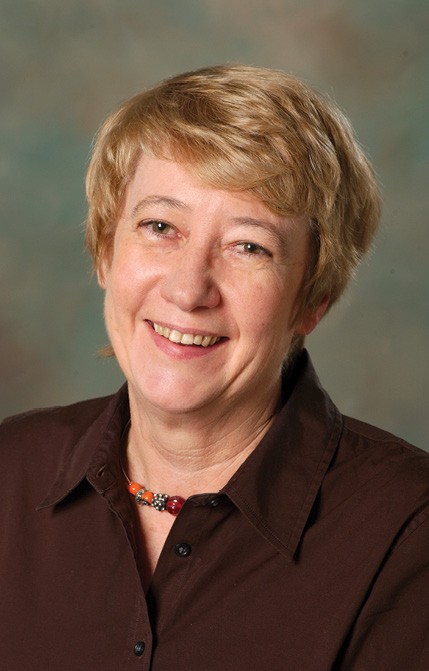
Director's Preface
This report summarises the activities of the Australian Research Council Centre of Excellence for Core to Crust Fluid Systems (CCFS) in 2013 (commenced mid 2011). Activities include research, technology development, industry interaction, international links and research training.
The overarching goal of CCFS is to understand Earth's internal dynamics, evolution and fluid cycles from core to crust. CCFS multiplies the capabilities of three national centres of research excellence in Earth and Planetary Sciences: Macquarie University (Administering Institution), Curtin University and the University of Western Australia (Collaborating Institutions). The Geological Survey of Western Australia is a Partner Institution and researchers from Monash University and the University of New South Wales are formally affiliated.
There were five formal international nodes in 2013 led by Partner Investigators in France (University of Montpellier), China (Institute of Geology and Geophysics, China Academy of Sciences), Canada (University of Saskatchewan), Germany (Bayreuth University) and
the USA (University of Maryland). However, since CCFS commenced, international interaction has blossomed and included active projects with 134 international institutions, with 186 international collaborators as co-authors on research articles in 2013. These international collaborations leverage the resources in CCFS and provide access to a wide variety of complementary expertise, logistics, instrumental capabilities and funding.
CCFS builds on pre-existing centres within the Administering and Collaborating Institutions: the GEMOC Key Centre (http://www.gemoc.mq.edu.au/) at Macquarie University retains its structure and is fully incorporated within CCFS to capitalise on its global recognition; the research and strategic activities of the Centre for Exploration Targeting (http://www.cet.edu.au/) at the University of Western Australia lie within CCFS; and some activities of the Institute for Geoscience Research(TiGeR: http://tiger.curtin.edu.au/) of Curtin University are also aligned with CCFS.
A highlight of 2013 was the joint Research Meeting held as part of the visit of the Science Advisory Council (SAC) in June 2013, just 2 years after CCFS commenced. The SAC presented a comprehensive report praising the Centre structure and activities and providing some very constructive suggestions. Some extracts illustrate the views of the 2013 SAC:
"At the time of the SAC meeting, the reputation of CCFS as a world-class research centre was solidly established...."
"CCFS brings together several areas of expertise that are world-class, and the combination makes it world leading. These include the core of GEMOC which is now part of the CCFS expertise in mantle fluid sources and transport in time and space, expertise related to Earth's early environments, analytical expertise and facilities.... expertise and numerical geodynamic modelling and geophysical imagery, and finally, connections to economic geology and industry."
"An important consensus of the SAC was the recognition of significant high-quality contributions by participating early-career CCFS members, postdocs and graduate students, and also an overall enthusiastic attitude about larger questions studied by the CCFS."
2013 has been a year of review, realignment and renewal. Two more leading national stakeholders have joined the active and engaged external Advisory Board, and seven new Chief investigators will have been appointed from early 2014, bringing new and enhanced core research expertise, visibility and resources. CCFS's new Vision statement ("Delivering the fundamental science needed to sustain Australia’s resource base") was extensively workshopped with the Advisory Board, and reflects our conceptual framework of delivering world-leading research in directions informed by stakeholder collaboration and national benefit. All the Foundation Projects have undergone scrutiny and will be realigned from mid 2014, informed by our two Science Advisory Council meetings and reports, and by intensive CCFS-wide workshopping. A scheme of 2-year Pilot Projects was introduced in late 2013 on an internally competitive basis, to identify and support new directions which, if successful, can become self-supporting with external funding or become new strands within Foundation Projects.
The success of gaining external leverage was continued. New grants included the seventh ARC Future Fellowship awarded to a CCFS participant (Dr Yingjie Yang) and the large SIEF grant with CSIRO and industry partners, addressing the recognition of distal footprints of economic deposits and evidencing the strong mineral exploration connection.
The postgraduate cohort keeps burgeoning with 80 PhD students undertaking research aligned with CCFS. The success of strategies to encourage and mentor early- and mid-career researchers is evidenced in the "Participants" Section.
There has been huge scientific and intellectual growth and building energy in CCFS, highlighted by the exciting project renewals and initiatives for the next phase of CCFS. This emphasises the strength of our Centre of Excellence heading into 2014 and the mid-term review. The extensive Research Highlight section reflects this steeply upward trajectory in outcomes matched by a high level of outputs.
2014 promises to be another exciting year for CCFS as the new and re-aligned projects start and we use our increased knowledge and new tools to further explore Earth’s inner space and workings since its formation over 4.5 billion years ago. This is ultimately the pathway to help secure Australia’s future mineral security, ensuring economic health for our society.
Professor S.Y. O'Reilly

 ARC Centre of Excellence for Core to Crust Fluid Systems
ARC Centre of Excellence for Core to Crust Fluid Systems